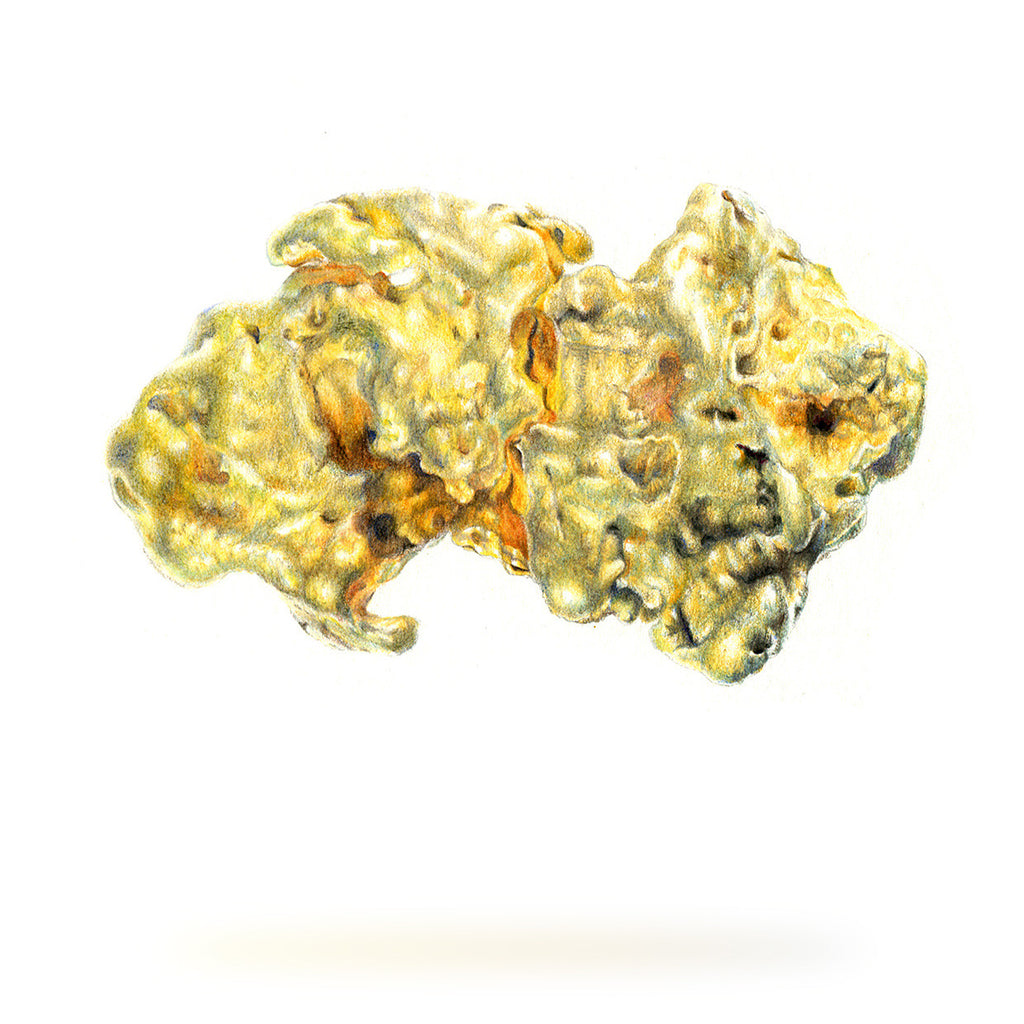Gold

Nothing else can claim the incredible legacy of gold, which has been woven into history and civilization more than any other metal. Humans have historically placed a high value on gold, equating it with power, divinity, beauty, and the elite. Since gold is found in many parts of the globe, we find this same thinking about gold throughout ancient and modern civilizations everywhere. Jewellers and metalsmiths have always loved using gold due to it’s excellent working characteristics, and while it has many uses, today 60% of the world’s demand for gold is for jewellery.

- Element/Au
- Colour/Yellow
- Moh's Hardness/2.5 - 3
- Anniversary/50th
GRADING
Gold is the most malleable of all metals and is also very dense and ductile. It often occurs in free elemental form (native) as nuggets or grains in alluvial deposits, veins or rock. Pure gold is hallmarked 24ct but is very soft, and rarely used in its pure form for jewellery. Typically, it is alloyed with other metals to produce a harder material to work with, which is more suitable for setting gemstones and longevity of wear. These range from 18ct which has the highest gold content and is the best alloy for wedding and engagement rings, to 14ct and 9ct, each being made up of less gold and larger amounts of alloys. The lower the amount of gold, the less expensive and less suitable for longevity and gem setting the gold will be.
Gold is also alloyed to produce different colours. When gold is in it’s natural form it is yellow. White gold is produced by alloying with palladium, and rose gold with copper. Other metals included in the alloy are usually silver when alloying below 18ct. Fineness is another way of expressing the parts of gold and alloy by showing purity in parts of 1000, this is sometimes stamped on the jewellery instead of carat. 18ct is stamped 750 (meaning 750 parts out of 1000 are pure gold, or 75%), 9ct is 375 and pure gold of 24ct is stamped 999.
HISTORY
Scientists believe gold was present in the dust from which the universe was formed, and that it was produced in supernova nucleosynthesis from the collision of neutron stars. When the Earth was formed it was molten and it’s likely that almost all the gold present sank into the planetary core. The gold that we are able to mine and find is in the Earth’s crust and mantle, thought to have been later delivered by asteroid impacts about 4 billion years ago. Gold has always been linked with beauty, power and prestige. It was also often linked to divinity and the gods across many cultures.
In 1849 gold fever hit California, creating large scale migration to the state from many parts of the globe with people hoping to find their fortune. A few years later, the Gold Rush began in Victoria, Australia and during the 1850s Victoria was producing almost 40% of the world’s gold supply. In the early days, much of the gold found was alluvial and easy to collect. Later on, miners needed to go deeper underground and mining became more difficult and dangerous. These periods of gold fever changed and shaped both California and Victoria in significant ways, bringing a flood of wealth, growth and multiculturalism due to the diversity of the migrant miners. Australia’s population more than tripled from 430,000 in 1851 to 1.7 million in 1871. Many large finds of famous gold nuggets occurred during this period. The largest alluvial nugget ever discovered was the Welcome Stranger, found in 1869 by two prospectors in Moliagul, Victoria and weighing 97.14 kilograms.
CARE
Gold is a durable material if cared for correctly. It can last many years but should be periodically cleaned and checked for wear and tear. The best way to clean your gold jewellery yourself is to simply soak the piece in warm soapy water and use a soft brush to remove dirt and built up grime. For polished finishes use a professional jewellery polishing cloth purchased from a jeweller like Pieces of Eight. If your piece has a matte finish, we recommend a professional liquid cleaning product designed to dip your piece into. Please ask us to recommend a suitable product for you as we need to ensure it is safe to use on any gems that might be in your jewellery.
A jeweller can use an ultrasonic machine to clean gold and at the same time re-polish or finish your jewellery if required. Be sure to store your jewellery in separate compartments or boxes so the pieces don’t scratch. Note that gold plating is a surface treatment that can wear away with time; it is not as long lasting as alloyed gold (i.e. 9ct and 18ct). To ensure longevity of this finish, wear it alone and not next to other pieces of jewellery that might cause it to scratch, also store it separately to other pieces to avoid this occurring. Gold plating can usually be refreshed by replating carried out by a professional. This is something you might need to do every 12-24 months depending on how the piece is worn.






































